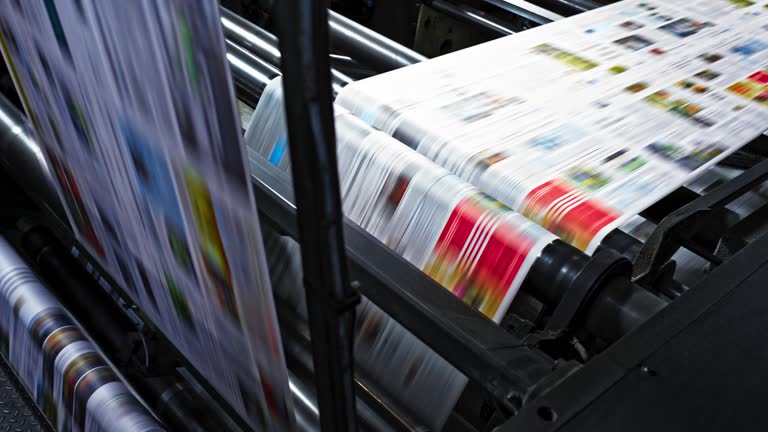In the world of printing, understanding the various offset printing ink types is crucial for achieving your desired results. As businesses look to make an impact with their printed materials, knowing the right ink type plays a pivotal role. This guide provides an in-depth look into offset printing ink types, offering insights that will help you make informed decisions for your printing needs.

The Basics of Offset Printing
Before diving into the different ink types, it’s essential to understand what offset printing entails. Offset printing is a widely used printing technique where the inked image is transferred (or ‘offset’) from a plate to a rubber blanket and then to the printing surface. This method is renowned for its high-quality output and is commonly used for mass production, including newspapers, magazines, and brochures.
Businesses often choose offset printing for magazines due to its cost-effectiveness and capability to produce sharp and clean images.
Types of Offset Printing Inks
1. Conventional Inks
Conventional inks are the most traditional type used in offset printing. They are oil-based and utilize a combination of pigments, binders, and additives to create vibrant colors. These inks are suitable for a wide range of paper types, making them versatile for various printing projects.
2. UV Cured Inks
UV cured inks are known for their fast-drying properties and durability. These inks are cured using ultraviolet light, which allows them to dry almost instantly. This feature makes them ideal for printing on non-absorbent materials like plastics and metal. Additionally, UV cured inks offer excellent resistance to fading and scratching, making them a popular choice for outdoor applications.
3. Soy-Based Inks
Soy-based inks are an environmentally friendly alternative to conventional inks. Made from soybean oil, they offer the same vibrant colors while being more sustainable. These inks are biodegradable and have lower levels of volatile organic compounds (VOCs), making them a preferred option for eco-conscious businesses.
4. Metallic Inks
Metallic inks are used to create a shiny, metallic finish on printed materials. They are often used for special projects where a luxurious and eye-catching appearance is desired. These inks contain metallic particles that reflect light, adding a unique touch to your prints.
Choosing the Right Ink for Your Project
Selecting the right ink type for your printing project depends on various factors, including the material you’re printing on, the desired finish, and environmental considerations. For instance, if you’re looking to print on unconventional surfaces, UV cured inks might be your best bet. On the other hand, if sustainability is a priority, soy-based inks would be more suitable.
Businesses looking to explore different ink options can benefit from consulting with printing experts. Understanding the nuances of each ink type can significantly impact the quality and effectiveness of your printed materials. For more insights on choosing the right printing methods, you can explore the differences between offset and flexo printing.
Factors Influencing Ink Selection
1. Substrate Compatibility
The material or substrate you’re printing on plays a significant role in determining the suitable ink type. For instance, non-porous materials like plastics require quick-drying inks, such as UV cured inks, to prevent smudging.
2. Environmental Impact
As businesses become more environmentally conscious, the demand for sustainable printing solutions has increased. Choosing inks with low VOC emissions and biodegradable properties can help reduce your carbon footprint and align with eco-friendly practices.
3. Desired Aesthetic
The visual appeal of your printed materials can influence the ink type you select. If you’re aiming for a luxurious look, metallic inks can add that extra sparkle, while conventional inks offer a classic and vibrant appearance.
Technological Advances in Ink Formulation
The printing industry continues to evolve with technological advancements, leading to the development of innovative ink formulations. These advancements have enhanced the performance and versatility of offset printing inks, allowing businesses to achieve exceptional results.
For businesses interested in the intersection of technology and printing, the potential of AI and IoT in printing is worth exploring. These technologies offer new possibilities for optimizing the printing process and improving efficiency.
Conclusion
Understanding the different offset printing ink types is crucial for businesses seeking high-quality and sustainable printing solutions. By considering factors such as substrate compatibility, environmental impact, and desired aesthetics, you can make informed decisions that align with your business goals. Whether you’re printing brochures, magazines, or promotional materials, the right ink choice will enhance the overall impact of your printed products.

FAQs
1. What is the most eco-friendly ink option for offset printing?
Soy-based inks are considered the most eco-friendly option due to their biodegradable properties and low VOC emissions.
2. How do UV cured inks differ from conventional inks?
UV cured inks dry instantly when exposed to ultraviolet light, making them ideal for non-absorbent materials, whereas conventional inks take longer to dry and are better suited for paper-based substrates.
3. Can I use metallic inks for all printing projects?
Metallic inks are best suited for projects where a shiny, luxurious finish is desired. They may not be ideal for all projects, especially those requiring a more subdued appearance.
This article contains affiliate links. We may earn a commission at no extra cost to you.







